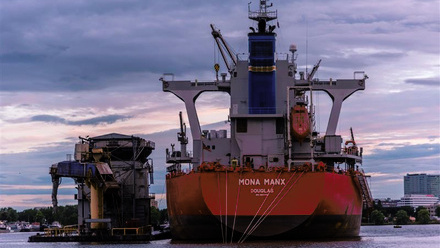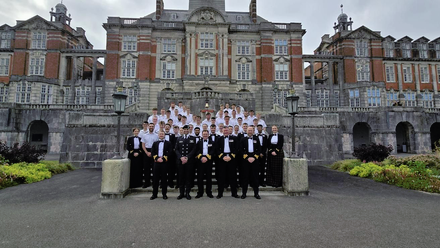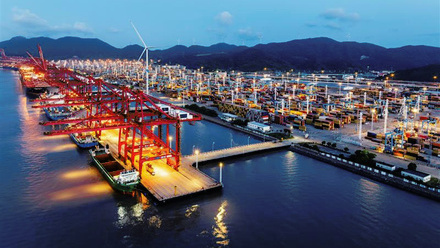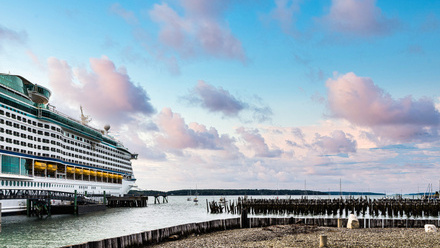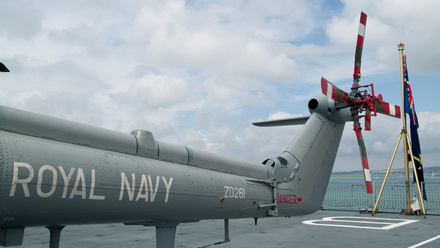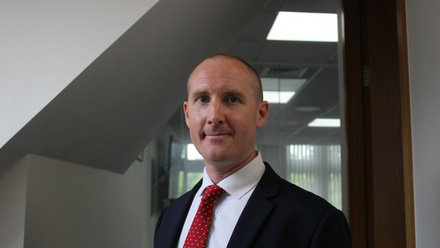Using maritime assets for humanitarian and disaster response operations
‘Approximately 70 offshore service vessels’ could have assisted in the delayed response to Hurricane Maria in Puerto Rico, says non-profit support service founder, while also highlighting how important AI is to coordinate help.
The maritime industry is tackling sea-based and ship-to-shore crises head on.
With advancements in technology and marine asset investments such as specialised response vessels, today's maritime sector is better equipped to deal with potential at-sea disasters than ever before. The introduction of non-profit organisations set up to strengthen the industry’s ship-to-shore response capabilities adds yet another element of preparedness.
A case in point is the foundation of Chaos Ready Inc. Chad N Fuhrmann, founder, explains that Chaos Ready was born out of a simple premise: that maritime response resources needed in crisis are often available within 250 nautical miles from an impacted region, globally.
“Offshore service vessels (OSVs) are multi-functional assets offering utilitarian capabilities essential to offshore industries,” says Fuhrmann. “These very same attributes can serve critical roles in a larger, integrated readiness strategy, but their response capabilities are often overshadowed by the focus on their industrial functions.”
Chaos Ready’s task became clear during the response to Hurricane Maria which struck Puerto Rico on September 20, 2017. The first public call to mobilise specialised maritime assets from the U.S. East Coast came four days later. By the time the vessel was activated, set sail, and finally arrived in Puerto Rico, 11 days had passed.
In the meantime, approximately 70 OSVs were available to assist response efforts explains Fuhrmann: “These assets offered a wide variety of services and were equipped with subsea construction equipment for harbour clearing, capable of carrying fuel trucks, containerised housing and medical facilities, generators, and much more. Unfortunately, many of these vessels were denied access to the region as the result of conflicting interpretation of regulations.
“While industrial assets cannot (and should not) replace dedicated resources, OSVs carry inherent capabilities for disaster response. Utilising this unrecognised functionality makes OSVs a crucial force multiplier when part of a holistic response infrastructure. In the immediate aftermath of a disaster, applying these ready assets alongside specialised vessels can save additional lives and proactively mitigate infrastructure damage by reducing the time between the call for assistance and its arrival on site.
“Chaos Ready’s mission is to foster a better understanding of these shared but overlooked talents across industry, response organisations, and regulatory bodies.”

Technology is key
Having evolved by leaps and bounds in recent years, today's progressive tech can be used to boost the speed and quality of response – which includes some of the more controversial innovations such as artificial intelligence (AI).
“AI is revolutionary and it is here to stay. Period,” claims Fuhrmann. “It’s evolving role across the maritime space cannot be overemphasised. While AI and related tech are feared in many areas of the industry, their potential impact on every aspect of disaster preparedness and response is far more positive than it is threatening.”
Listing the possibilities that AI affords, Fuhrmann continues: “AI can analyse satellite and ship sensor data to detect an impending crisis or highlight hazards that may endanger response vessels. It can help OSVs and other assets safely navigate challenging environments through real-time, optimised routing which accounts for weather, traffic, and emergency needs. AI can help prioritise the placement and movement of resources based on the severity of an emergency as well as monitor and predict supply needs.”
In addition, Fuhrmann says that machine learning can help forecast not only the disasters themselves, but also any domino effect, helping the development of ideal response strategies. “It can prioritise distress calls and integrate radio and satellite communications and digital platforms for real-time updates while language processing technology can translate distress calls and coordinate multi-national teams and assets,” he states.
But because of the infrequency and global distribution of crisis events, Fuhrmann says that continuous improvement through lessons learned has historically been difficult to harness. Post-emergency analyses through AI-powered incident reports, however, can automatically compile and assess data from past emergencies to improve future response strategies. AI and machine learning can simulate emergency scenarios for crew training and evaluate human decision making during crises to improve asset coordination and behaviour.
“At every stage of response, these innovations can provide invaluable assistance, improving situational awareness, communications, coordination and logistics, navigation, and so much more.”
When asked if the maritime industry is perfectly placed to support humanitarian and disaster operations, Fuhrmann says that not only is it perfectly placed, it is also “perfectly equipped”.
“Our industry’s assets and personnel are critical resources in disaster preparedness and response,” he says.
A caveat to this is the industry in general, which – as Fuhrmann explains – comes down to a question of awareness: “The problem remains that not even the industry itself is fully aware of its potential. If we don’t recognise our own capabilities, we cannot expect response organisations or government agencies to know that the functions they need are many times located nearby, ready, safe, reliable, and available to assist.
“Once we have greater awareness of each vessel’s capabilities beyond its industrial mission, we can make huge strides in using those hidden talents to improve crisis response, save lives, and mitigate damage to infrastructure.”
Fuhrmann concludes that the global maritime industry is capable of a more significant impact than can be measured solely by its industrial components.
“Serving as the catalyst between recognised response needs and intrinsic response capabilities, Chaos Ready Inc. is uniquely positioned to help realise the enormous benefits that OSVs and other maritime resources bring to the table.”
Tell us what you think about this article by joining the discussion on IMarEST Connect.
Main image: painted Puerto Rico state flag on uprooted tree from Hurricane Maria in San Juan, Puerto Rico. Credit: Shutterstock.
Inline image: Chad N Fuhrmann, founder. Credit: Chaos Ready Inc.
Discover more about the work of Chaos Ready Inc.

